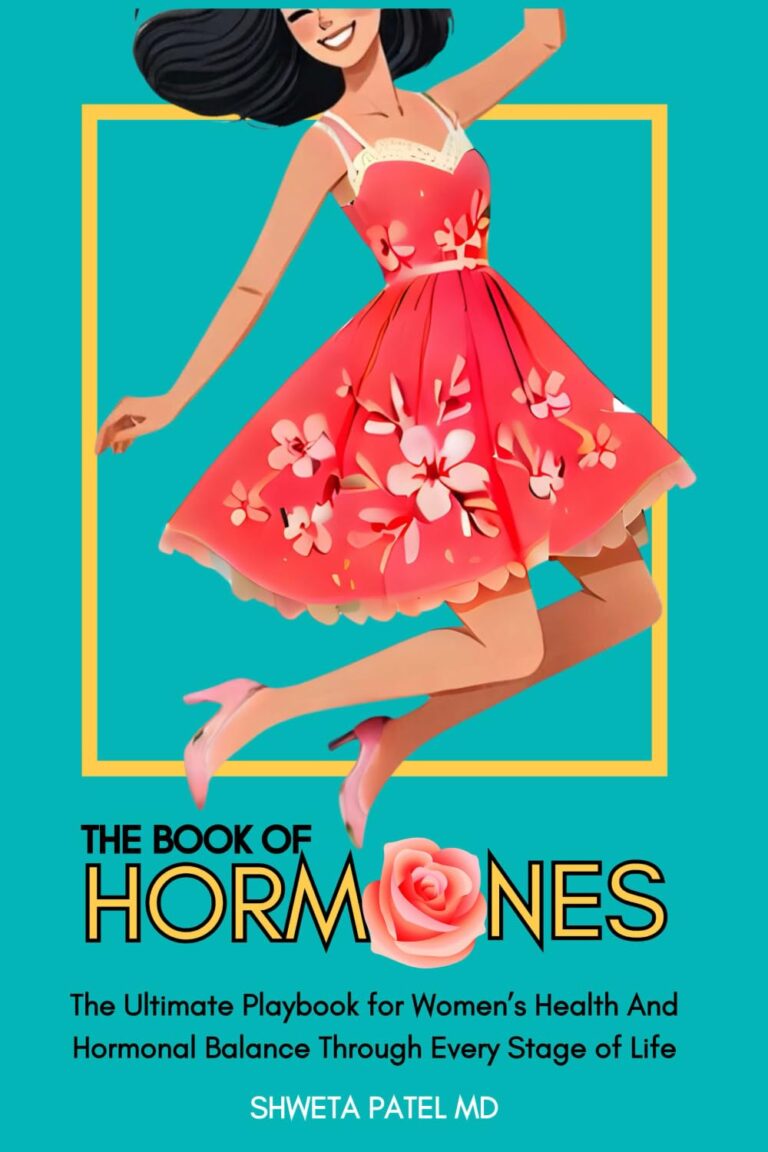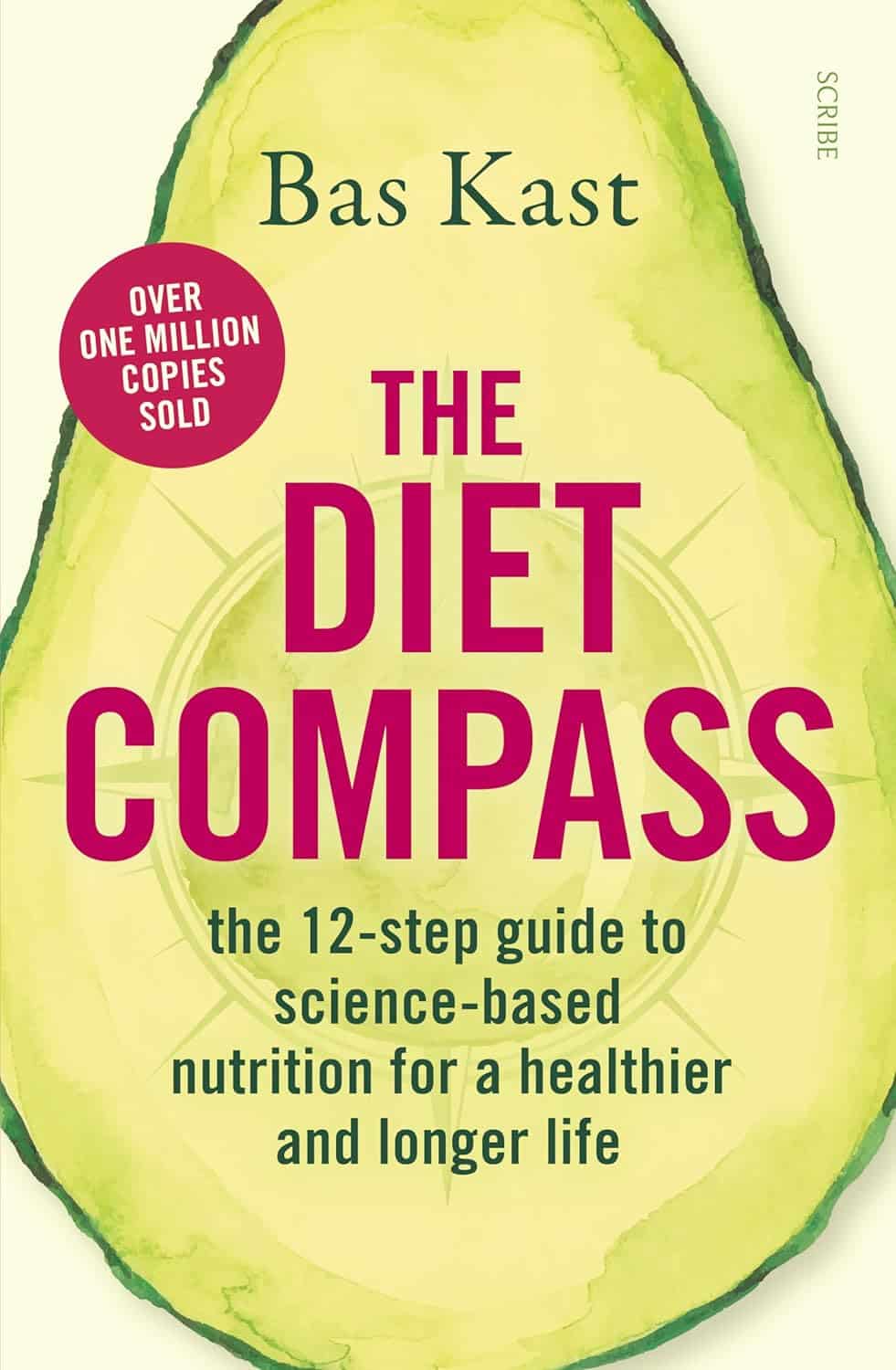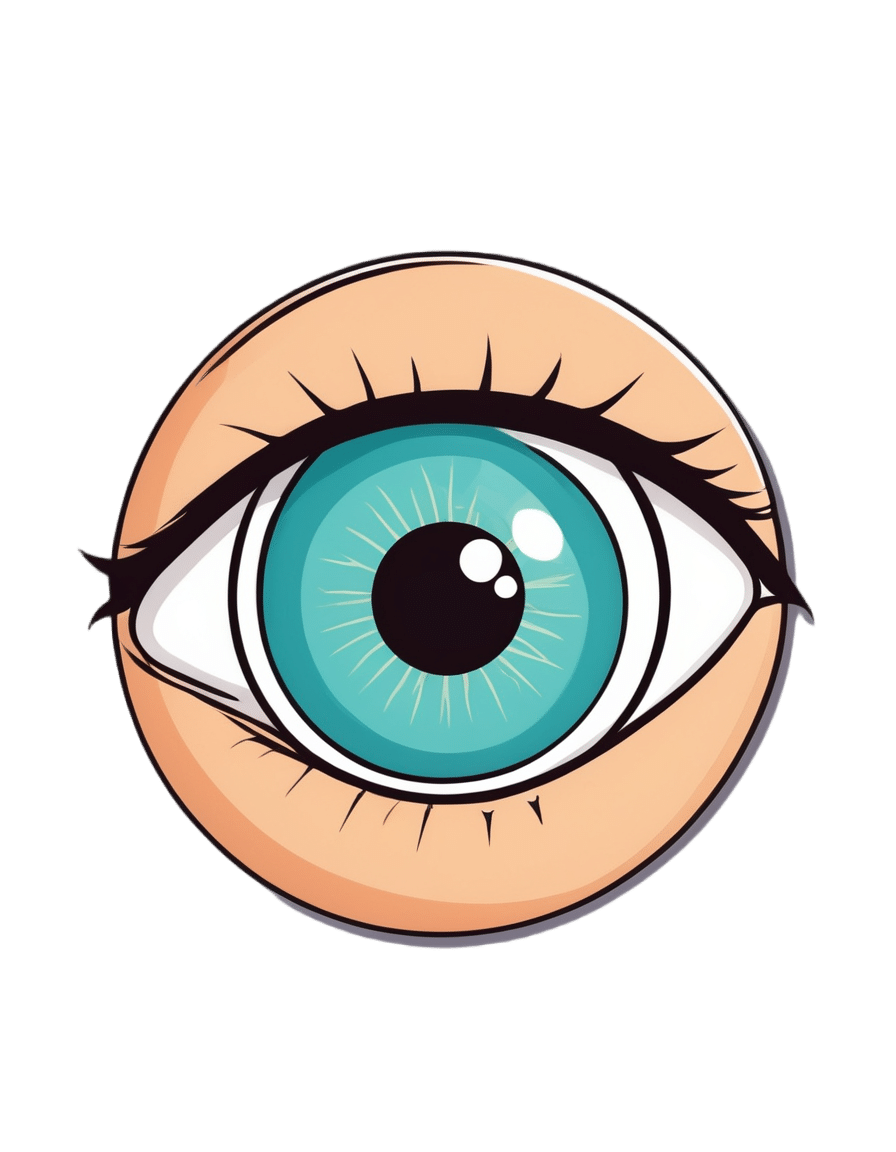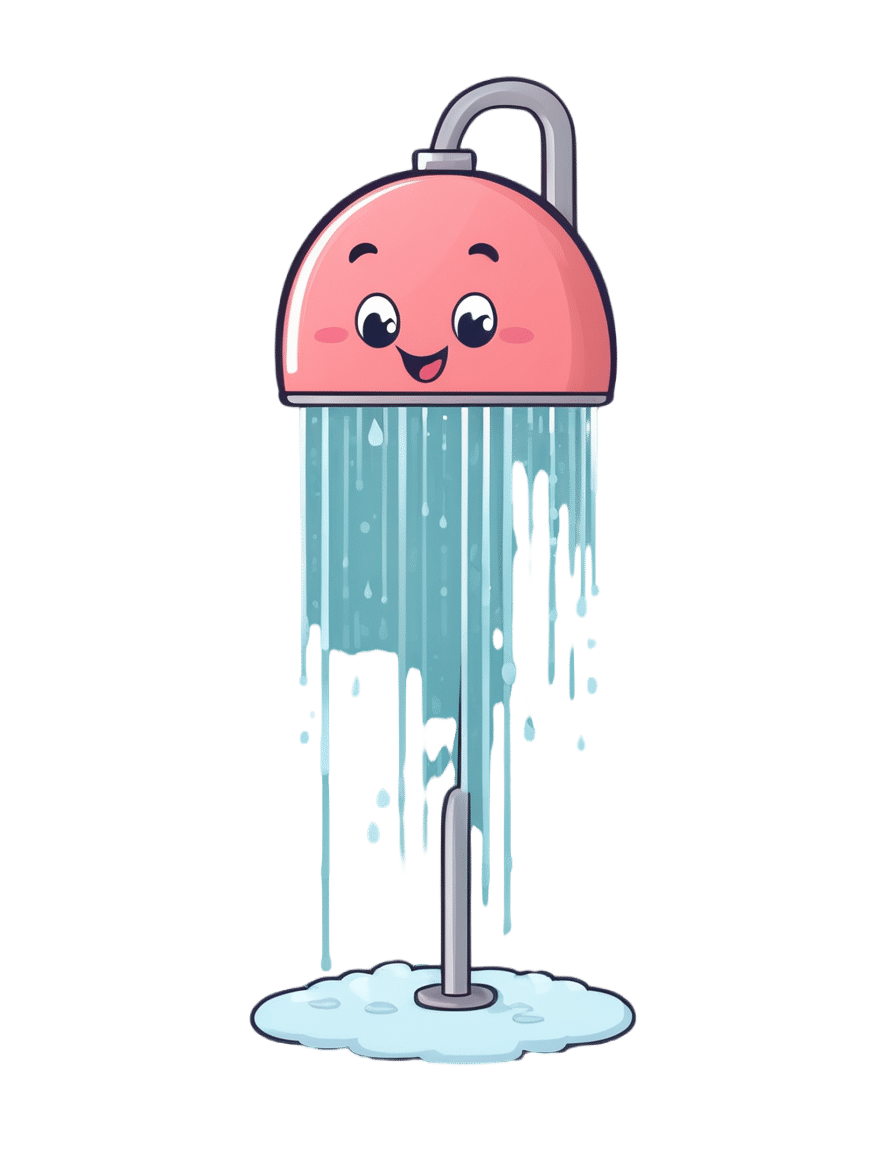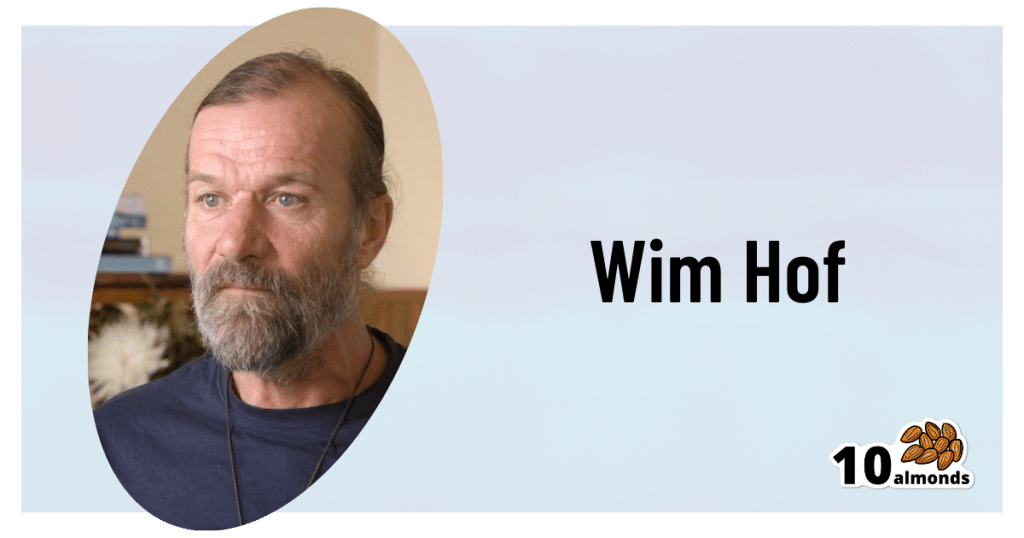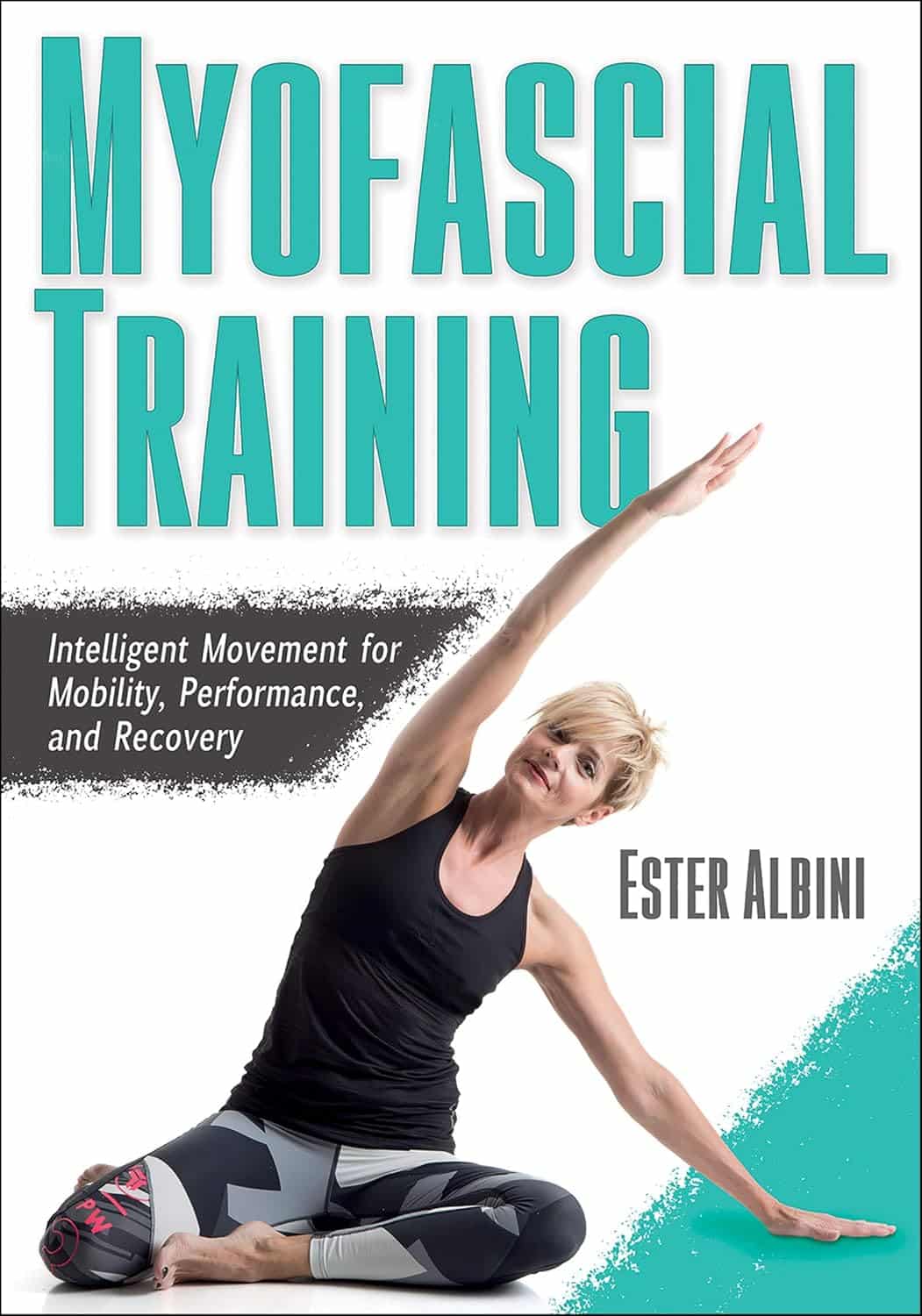
Myofascial Training – by Ester Albini
10almonds is reader-supported. We may, at no cost to you, receive a portion of sales if you purchase a product through a link in this article.
Fascia is an oft-forgotten part of the body—if something that is so ubiquitous and varied can be described as a single part. And yet, it arguably is—precisely because it is the connective tissue that holds everything else together, so by its nature, it’s ultimately a one-piece thing.
This “one-piece thing” is responsible for permitting us movement, and is also responsible for restricting our movement. As such, when it comes to mobility, we can stretch our muscles all day long and it won’t mean a thing if our fascia is stiff. And notably, fascia has a much slower turnover time (in terms of how quickly the body replaces it) than muscle, so fascia is almost always going to be the limiting factor.
Pilates instructor (with many certifications) Albini gives the reader the tools to loosen up that limiting factor. It’ll take time and consistency (it takes the body around 18 months to fully rebuild fascia, so that’s the timeframe for an ultimate “job done” to then just be maintained), but there are also some results to be enjoyed immediately, by virtue of myofascial release
In style, the book is half textbook, half workbook. She explains a lot of the anatomy and physiology of fascia (and does so very well). This book is, in this reviewer’s opinion, better than the usual go-to professional guidebook to fascia (i.e., for physiotherapists etc) that costs more than twice the price and is half as clear (the other book’s diagrams are unnecessarily abstract, the photos fuzzy, and the prose tedious). This book, in contrast, has very clear diagrams, hundreds of high-quality color photos, and excellent explanations that are aimed at the layperson, and/but aren’t afraid to get technical either; she just explains the technicalities well too.
The workbook side of things is a vast array of exercises to do, including for specific issues and to combat various lifestyle problems, as well as to just support general health and more mobility than most people think is possible for them.
Bottom line: if you’d like better mobility and have been neglecting your fascia (or have been a bit confused by it), this book is going to be your new best friend.
Click there to check out Myofascial Training, and free your body’s movements!
Don’t Forget…
Did you arrive here from our newsletter? Don’t forget to return to the email to continue learning!
Recommended
Learn to Age Gracefully
Join the 98k+ American women taking control of their health & aging with our 100% free (and fun!) daily emails:
-
The Diet Compass – by Bas Kast
10almonds is reader-supported. We may, at no cost to you, receive a portion of sales if you purchase a product through a link in this article.
Facts about nutrition and health can be hard to memorize. There’s just so much! And often there are so many studies, and while the science is not usually contradictory, pop-science headlines sure can be. What to believe?
Bas Kast brings us a very comprehensive and easily digestible solution.
A science journalist himself, he has gone through the studies so that you don’t have to, and—citing them along the way—draws out the salient points and conclusions.
But, he’s not just handing out directions (though he does that too); he’s arranged and formatted the information in a very readable and logical fashion. Chapter by chapter, we learn the foundations of important principles for “this is better than that” choices in diet.
Most importantly, he lays out for us his “12 simple rules for healthy eating“, and they are indeed as simple as they are well-grounded in good science.
Bottom line: if you want “one easy-reading book” to just tell you how to make decisions about your diet, simply follow those rules and enjoy the benefits… Then this book is exactly that.
Click here to check out The Diet Compass and get your diet on the right track!
Share This Post
-
Breakfasting For Health?
10almonds is reader-supported. We may, at no cost to you, receive a portion of sales if you purchase a product through a link in this article.
Breakfast Time!
In yesterday’s newsletter, we asked you for your health-related opinions on the timings of meals.
But what does the science say?
Quick recap on intermittent fasting first:
Today’s article will rely somewhat on at least a basic knowledge of intermittent fasting, what it is, and how and why it works.
Armed with that knowledge, we can look at when it is good to break the fast (i.e. breakfast) and when it is good to begin the fast (i.e. eat the last meal of the day).
So, if you’d like a quick refresher on intermittent fasting, here it is:
Intermittent Fasting: We Sort The Science From The Hype
And now, onwards!
One should eat breakfast first thing: True or False?
True! Give or take one’s definition of “first thing”. We did a main feature about this previously, and you can read a lot about the science of it, and see links to studies:
The Circadian Rhythm: Far More Than Most People Know
In case you don’t have time to read that now, we’ll summarize the most relevant-to-today’s-article conclusion:
The optimal time to breakfast is around 10am (this is based on getting sunlight around 8:30am, so adjust if this is different for you)
It doesn’t matter when we eat; calories are calories & nutrients are nutrients: True or False?
Broadly False, for practical purposes. Because, indeed calories are calories and nutrients are nutrients at any hour, but the body will do different things with them depending on where we are in the circadian cycle.
For example, this study in the Journal of Nutrition found…
❝Our results suggest that in relatively healthy adults, eating less frequently, no snacking, consuming breakfast, and eating the largest meal in the morning may be effective methods for preventing long-term weight gain.
Eating breakfast and lunch 5-6 h apart and making the overnight fast last 18-19 h may be a useful practical strategy.❞
Read in full: Meal Frequency and Timing Are Associated with Changes in Body Mass Index
We should avoid eating too late at night: True or False?
False per se, True in the context of the above. Allow us to clarify:
There is nothing inherently bad about eating late at night; there is no “bonus calorie happy hour” before bed.
However…
If we are eating late at night, that makes it difficult to breakfast in the morning (as is ideal) and still maintain a >16hr fasting window as is optimal, per:
❝the effects of the main forms of fasting, activating the metabolic switch from glucose to fat and ketones (G-to-K), starting 12-16 h after cessation or strong reduction of food intake❞
~ Dr. Françoise Wilhelmi de Toledo et al.
So in other words: since the benefits of intermittent fasting start at 12 hours into the fast, you’re not going to get them if you’re breakfasting at 10am and also eating in the evening.
Summary:
- It is best to eat breakfast around 10am, generally (ideally after some sunlight and exercise)
- While there’s nothing wrong with eating in the evening per se, doing so means that a 10am breakfast will eliminate any fasting benefits you might otherwise get
- If a “one meal a day, and that meal is breakfast” lifestyle doesn’t suit you, then one possible good compromise is to have a large breakfast, and then a smaller meal in the late afternoon / early evening.
One last tip: the above is good, science-based information. Use it (or don’t), as you see fit. We’re not the boss of you:
- Maybe you care most about getting the best circadian rhythm benefits, in which case, prioritizing breakfast being a) in the morning and b) the largest meal of the day, is key
- Maybe you care most about getting the best intermittent fasting benefits, in which case, for many people’s lifestyle, a fine option is skipping eating in the morning, and having one meal in the late afternoon / early evening.
Take care!
Share This Post
-
Eyes for Alzheimer’s Diagnosis: New?
10almonds is reader-supported. We may, at no cost to you, receive a portion of sales if you purchase a product through a link in this article.
It’s Q&A Time!
This is the bit whereby each week, we respond to subscriber questions/requests/etc
Have something you’d like to ask us, or ask us to look into? Hit reply to any of our emails, or use the feedback widget at the bottom, and a Real Human™ will be glad to read it!
Q: As I am a retired nurse, I am always interested in new medical technology and new ways of diagnosing. I have recently heard of using the eyes to diagnose Alzheimer’s. When I did some research I didn’t find too much. I am thinking the information may be too new or I wasn’t on the right sites.
(this is in response to last week’s piece on lutein, eyes, and brain health)
We’d readily bet that the diagnostic criteria has to do with recording low levels of lutein in the eye (discernible by a visual examination of macular pigment optical density), and relying on the correlation between this and incidence of Alzheimer’s, but we’ve not seen it as a hard diagnostic tool as yet either—we’ll do some digging and let you know what we find! In the meantime, we note that the Journal of Alzheimer’s Disease (which may be of interest to you, if you’re not already subscribed) is onto this:
See also:
- Journal of Alzheimer’s Disease (mixture of free and paid content)
- Journal of Alzheimer’s Disease Reports (open access—all content is free)
Share This Post
Related Posts
-
A Cold Shower A Day Keeps The Doctor Away?
10almonds is reader-supported. We may, at no cost to you, receive a portion of sales if you purchase a product through a link in this article.
A Cold Shower A Day Keeps The Doctor Away?
This is Dutch extreme athlete Wim Hof, also known as “The Iceman”! He’s broken many world records mostly relating to the enduring the cold, for example:
- climbing Mount Kilimanjaro in shorts
- running a half-marathon above the Arctic Circle barefoot
- standing in a container completely covered with ice cubes for more than 112 minutes
You might not want to do yoga in your pyjamas on an iceberg, but you might like…
- better circulatory health
- reduced risk of stroke
- a boosted immune system
- healthier skin
- more energy and alertness
…and things like that. Wim Hof’s method is not just about extreme athletic achievements; most of what he does, the stuff that can benefit the rest of us, is much more prosaic.
The Wim Hof Method
For Wim Hof, three things are key:
- Breathing (See: Wim Hof Method Breathing Exercises)
- Commitment (See: How to Increase Willpower)
- Cold therapy (See: Benefits of Cold Therapy)
Today, we’re going to be focusing on the last one there.
What are the benefits of Cold Therapy?
Once upon a time, we didn’t have central heating, electric blankets, thermal underwear, and hot showers. In fact, once upon a time, we didn’t have houses or clothes. We used to be a lot more used to the elements! And while it’s all well and good to enjoy modern comforts, it has left our bodies lacking practice.
Practice at what? Most notably: vasodilation and vasoconstriction, in response to temperature changes. Either:
- vasodilation, because part of our body needs more blood to keep it warm and nourished, or
- vasoconstriction, because part of our body needs less blood running through it to get cooled down.
Switching between the two gives the blood vessels practice at doing it, and improves vascular muscle tone. If your body doesn’t get that practice, your blood vessels will be sluggish at making the change. This can cause circulation problems, which in turn have a big impact in many other areas of health, including:
- cardiovascular disease
- stroke risk
- mood instability
- nerve damage in extremities
On the flipside, if the blood vessels do get regular practice at dilating and constricting, you might enjoy lower risk of those things, and instead:
- improved immune response
- healthier skin
- better quality sleep
- more energy and alertness
- improved sexual performance/responsiveness
So, how to get that, without getting extreme?
As today’s title suggests, “a cold shower a day” is a great practice.
You don’t have to jump straight in, especially if you think your circulation and vascular responses might be a bit sluggish in the first instance. In fact, Wim Hof recommends:
- Week 1: Thirty seconds of cold water at the end of a warm shower each morning
- Week 2: One minute of cold water at the end of a warm shower each morning
- Week 3: A minute and a half of cold water at the end of a warm shower each morning
- Week 4: Two minutes of cold water at the end of a warm shower each morning
How cold is cold?
The benefits of cold exposure begin at around 16ºC / 60ºF, so in most places, water from the cold water mains is sufficiently cold.
As your body becomes more used to making the quick-change on a vascular level, the cold water will seem less shocking to your system. In other words, on day 30 it won’t hit you like it did on day one.
At that point, you can either continue with your two-minutes daily cold shower, and reap the benefits, or if you’re curious to push it further, that’s where ice baths come in!
Can anyone do it, or are any conditions contraindicated?
As ever, we’re a health and productivity newsletter, not doctors, let alone your doctors. Nothing here is medical advice. However, Wim Hof himself says:
❝Listen to your body, and never force the practices. We advise against doing Wim Hof Method if you are dealing with any of the following:
- Epilepsy
- High blood pressure
- Coronary heart disease
- A history of serious healthy issues like heart failure or stroke
- Pregnancy*
- Childhood*❞
*There is simply not enough science regarding the effects of cold exposure on people who are pregnant, or children. Obviously, we don’t expect this to be remedied anytime soon, because the study insitutions’ ethics boards would (rightly!) hold up the study.
As for the other conditions, and just generally if unsure, consult a doctor.
As you can see, this does mean that a limitation of Cold Therapy is that it appears to be far better as a preventative, since it helps guard against the very conditions that could otherwise become contraindications.
We haven’t peppered today’s main feature with study papers, partly because Wim Hof’s own website has kindly collated a collection of them (with links and summaries!) onto one page:
Further reading: The Science Behind The Wim Hof Method
Don’t Forget…
Did you arrive here from our newsletter? Don’t forget to return to the email to continue learning!
Learn to Age Gracefully
Join the 98k+ American women taking control of their health & aging with our 100% free (and fun!) daily emails:
-
Black Tea or Green Tea – Which is Healthier?
10almonds is reader-supported. We may, at no cost to you, receive a portion of sales if you purchase a product through a link in this article.
Our Verdict
When comparing black tea to green tea, we picked the black tea.
Why?
It was close! Ultimately we picked the black tea as the “best all-rounder”.
Both teas are great for the health, insofar as tea in general is a) a very good way to hydrate (better absorption than plain water) and b) an excellent source of beneficial phytochemicals—mostly antioxidants of various kinds, but there’s a lot in there.
We did a run-down previously of the relative benefits of each of four kinds of tea (black, white, green, red):
Which Tea Is Best, By Science?
Which concluded in its final summary:
Black, white, green, and red teas all have their benefits, and ultimately the best one for you will probably be the one you enjoy drinking, and thus drink more of.
If trying to choose though, we offer the following summary:
- Black tea: best for total beneficial phytochemicals
- White tea:best for your oral health
- Green tea: best for your brain
- ❤️ Red tea: best if you want naturally caffeine-free
Enjoy!
Don’t Forget…
Did you arrive here from our newsletter? Don’t forget to return to the email to continue learning!
Learn to Age Gracefully
Join the 98k+ American women taking control of their health & aging with our 100% free (and fun!) daily emails:
-
Aging Solo – by Ellen Dawson
10almonds is reader-supported. We may, at no cost to you, receive a portion of sales if you purchase a product through a link in this article.
Many of us will face the challenge of “aging solo”, if indeed we’re not already. The premise of this book is that while it may indeed be a challenge, it can be an exciting challenge rather than a scary one.
Thus, Dawson bids us empower ourselves to tackle it head on, proactively.
To that end, she offers her “EMPOWER” framework:
- Embrace the challenge of living solo
- Manage money mindfully while welcoming desires
- Prioritize vitality and live a vibrant life
- Own your identity; build resilience and confidence
- Weave bonds: build and maintain relationships (solo doesn’t mean lacking connections!
- Energize yourself and discover new passions
- Renew yourself and create a joyful environment
Now, as listed, those may seem a little vague, but rest assured she goes into great detail in the book, with a whole chapter for each.
For example, prioritizing vitality and energizing oneself can seem like a double-up, but the former chapter is about healthy living in the context of the solo life, while the latter chapter is more about avocation lifelong learning, overcoming fear of the unknown, and making sure to actually live this one precious life, not just go through the motions.
The style is energetic and motivational, and yet backed up with 19 pages of scientific references.
Bottom line: this book is, in essence, a roadmap for aging solo and creating the future we deserve, on our own terms. An enjoyable, practical, and uplifting read!
Click here to check out Aging Solo, and thrive as a “Soloist”!
Don’t Forget…
Did you arrive here from our newsletter? Don’t forget to return to the email to continue learning!
Learn to Age Gracefully
Join the 98k+ American women taking control of their health & aging with our 100% free (and fun!) daily emails:

